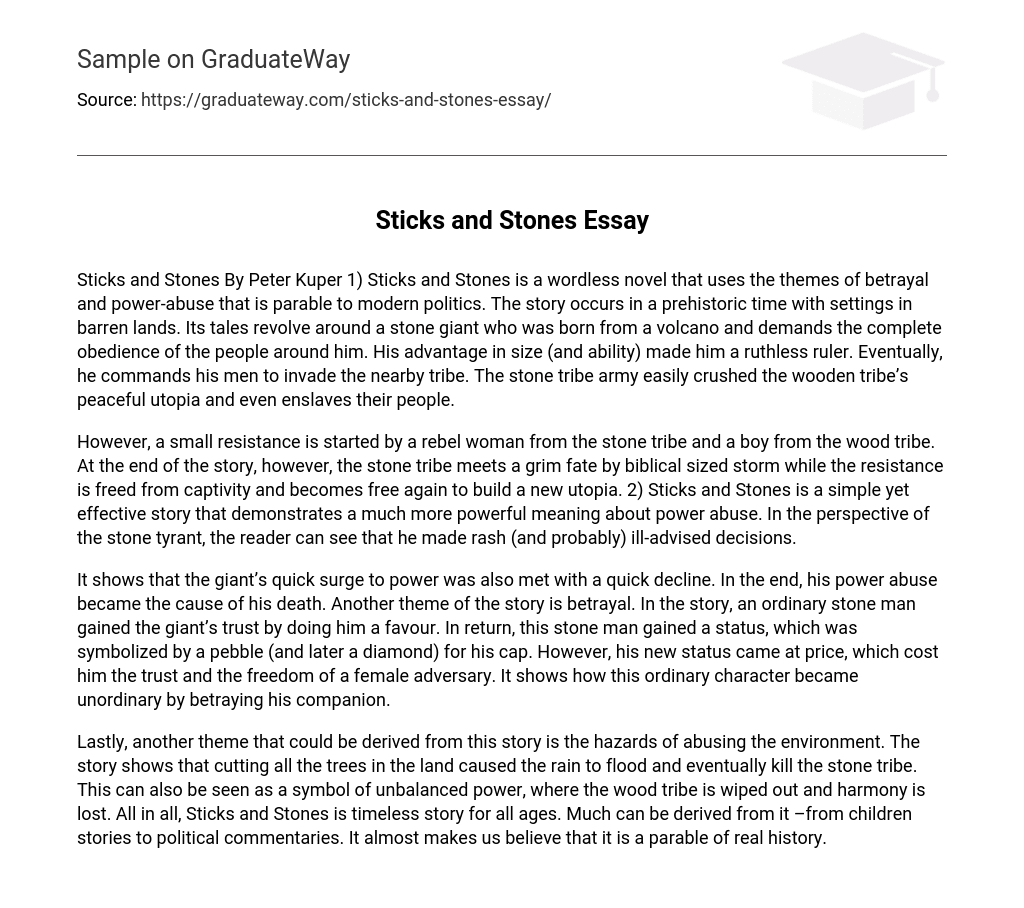Sticks and Stones By Peter Kuper 1) Sticks and Stones is a wordless novel that uses the themes of betrayal and power-abuse that is parable to modern politics. The story occurs in a prehistoric time with settings in barren lands. Its tales revolve around a stone giant who was born from a volcano and demands the complete obedience of the people around him. His advantage in size (and ability) made him a ruthless ruler. Eventually, he commands his men to invade the nearby tribe. The stone tribe army easily crushed the wooden tribe’s peaceful utopia and even enslaves their people.
However, a small resistance is started by a rebel woman from the stone tribe and a boy from the wood tribe. At the end of the story, however, the stone tribe meets a grim fate by biblical sized storm while the resistance is freed from captivity and becomes free again to build a new utopia. 2) Sticks and Stones is a simple yet effective story that demonstrates a much more powerful meaning about power abuse. In the perspective of the stone tyrant, the reader can see that he made rash (and probably) ill-advised decisions.
It shows that the giant’s quick surge to power was also met with a quick decline. In the end, his power abuse became the cause of his death. Another theme of the story is betrayal. In the story, an ordinary stone man gained the giant’s trust by doing him a favour. In return, this stone man gained a status, which was symbolized by a pebble (and later a diamond) for his cap. However, his new status came at price, which cost him the trust and the freedom of a female adversary. It shows how this ordinary character became unordinary by betraying his companion.
Lastly, another theme that could be derived from this story is the hazards of abusing the environment. The story shows that cutting all the trees in the land caused the rain to flood and eventually kill the stone tribe. This can also be seen as a symbol of unbalanced power, where the wood tribe is wiped out and harmony is lost. All in all, Sticks and Stones is timeless story for all ages. Much can be derived from it –from children stories to political commentaries. It almost makes us believe that it is a parable of real history.





